GSMArena smartphone buyer's guide: May 2015
May 2015
€200-€300
This chapter has some excellent devices though you may have to manage your excitement. We're mostly shopping for old, priced-down flagships here. While they share genes with the latest and greatest, most won't satisfy power users and early adopters. That comes in the later chapters, bang for the buck is still king here.
At a bit over €200 the BlackBerry Z10 makes for a quality compact phone for the security-conscious that couldn't stomach the return to small screens and hardware keyboards represented by the BlackBerry Q5. The 4.2" screen is surrounded by thicker bezels than much of the competition, but at least the build is solid.
The 8MP/1080p camera is fairly good, though you'll have to sideload Instagram, Snapchat and the like (the Android versions reportedly work well enough). For business use, Office 365 is fully available.
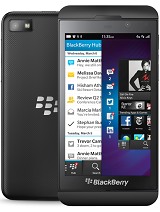
BlackBerry Z10 |
Pros |
Cons |
|
|
|
|
| Review |
The LG Optimus G Pro has proven one of the evergreen Androids. It's from early 2013 so it's pretty cheap these days, but it brings a good 5.5" 1080p screen, a Snapdragon 600 chipset (which stacks up quite favorably against S400 chips) and a 13MP camera with 1080p video.
It was updated to Android 4.4 KitKat and that may be its last stop (at least officially). Also, supplies may be running low, but if you find one, it's a good value for money deal.
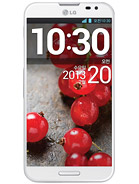
LG Optimus G Pro E985 |
Pros |
Cons |
|
|
|
|
| Review |
Neither the Desire 510 nor 610 made the cut, though the HTC Desire 620 dual sim is a sort-of baby One phone. No, it doesn't have a metal unibody, but it does have front-facing stereo speakers, Sense UI and a 5MP/1080p selfie camera. The 8MP/1080p main camera sounds pretty good, at least against the One and One (M8).
The Desire 620 dual sim also has a 5" 720p screen, a Snapdragon 410 chipset (64-bit Cortex-A53 cores) and as the name suggests, dual-SIM connectivity. Note that for a bit more cash you can get the Desire 620G version, which packs a faster octa-core processor.
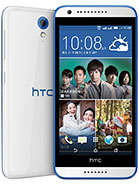
HTC Desire 620 dual sim |
Pros |
Cons |
|
|
||
If you want a better camera then the Nokia Lumia 830 will tempt you with one of the most affordable OIS-enabled cameras. It has Carl Zeiss optics, a 10MP sensor with some PureView tech and 1080p video capture. The 0.9MP/720p selfie camera is a bit of a disappointment.
The Lumia 830 has some metal too, an aluminum rim around the glass front/polycarbonate back. Other than that, the 5" 720p screen fits in a noticeably smaller body than the Desire (the price of stereo speakers) and you're guaranteed an update to Windows 10 while HTC hasn't mentioned any update plans for the Desire 620.
There's no dual-SIM option so you might want to look at the Lumia 730 again if that's important. With the same chipset and nearly the same screen size, the major difference is in the photography department - the 830 has a great main camera, the 735 has a great selfie camera.

Nokia Lumia 830 |
Pros |
Cons |
|
|
|
|
| Review |
We already saw the Idol mini, now it's time for its big bro. The Alcatel Idol X+ is just as thin (7.9mm) and surprisingly light (125G), but it ups the screen size to 5" and quadruples the resolution to 1080p. It also doubles the CPU cores too with an octa-core processor clocked at 2GHz.
The 13MP/1080p camera and stereo speakers sound great too, though here's the bad news - unlike the Idol min there's no version with 1 SIM and 1 microSD, you just get a dual-SIM version and no memory expansion. So we'd recommend getting the 32GB version.
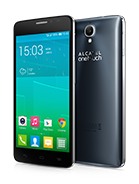
Alcatel Idol X+ |
Pros |
Cons |
|
|
|
|
| Review |
Another phone in the evergreen folder is the Sony Xperia Z1 Compact. It's small, powerful, with a good camera, waterproof and features a metal frame, what's not to like?
Okay, the bezels around the 4.3" screen make it bigger than it needs to be, but the Snapdragon 800 chipset makes it more powerful than most phones so far. The 20.7MP camera is a serious contender too, it matches the Xperia Z3 for stills though it lacks the 2160p video option.
The camera is enough to put it in competition with the Lumia 830, but the metal rim/glass back design pours even more oil into the fire. The Xperia Z1 Compact will be updated to Android 5.0 Lollipop and can go under more than 1 meter of water.
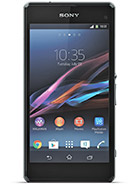
Sony Xperia Z1 Compact |
Pros |
Cons |
|
|
|
|
| Review |
For a bit more cash you can have the full-size Sony Xperia Z1 too. It upgrades the screen to 5" 1080p and has a bigger battery but in practice both phones are equals.

Sony Xperia Z1 |
Pros |
Cons |
|
|
|
|
| Review |
The Xperia M4 Aqua can dive just as deep (and wards off dust better), plus it has a bigger screen, 5" 720p. It will go on sale in a couple of months and bring a 64-bit octa-core processor and Android 5.0 Lollipop. The camera department isn't quite as impressive, but still great with a 13MP/1080p main camera and 5MP/720p selfie camera.
We'd normally go for the flagship Xperia Z1 Compact, but if you need a bigger screen you might want to wait a couple of months.
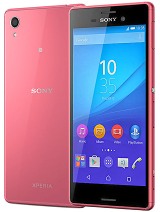
Sony Xperia M4 Aqua |
Pros |
Cons |
|
|
|
|
| Review |
If it's a compact phone you want, the HTC One mini 2 is one, at least by name. As with the Desire 620 the stereo speakers on the front make it rather large for its screen size (4.5"), but unlike both the Desire and Xperia Z1 Compact this one has an all-metal unibody.
The 13MP/1080p main camera is comparable to what the M4 Aqua packs, but the 5MP selfie camera one ups it with 1080p video. The quad-core Cortex-A7 chipset is less than you'd expect in this price range, but at least the update to Android 5.0 Lollipop is already planned.
The Samsung Galaxy A3 is more compact with a 4.5" screen and while it's a Super AMOLED display we're not fans of its resolution (540 x 960px). It has a metal frame too, but the plastic back isn't quite as nice as that of the Lumia 830 or the glass on the Xperia Z1 Compact.
The chipset is slightly better with a 64-bit CPU than Nokia's and HTC's, but we'd still pick the Sony's 32-bit Snapdragon 800. With nearly equal price tags, we don't think the baby of the Galaxy A-series passes muster.

HTC One mini 2 |
Pros |
Cons |
|
|
|
|
| Review |
Another waterproof Sony is the Xperia Z Ultra phablet. It's huge - no other way with a 6.4" screen. It's a quality 1080p display though and the Snapdragon 800 chipset is biding its time until the Android 5.0 Lollipop update.
The phablet has the Z-series glass and metal build and is stunningly thin at 6.3mm The 8MP/1080p camera is good, except there's no LED flash.
The Sony Xperia Z Ultra may be huge, but it makes up for it with a great browsing and gaming experience. You can always pair it with a Smart Watch 3 to monitor your notifications and even answer texts without pulling the phablet out of your bag.

Sony Xperia Z Ultra |
Pros |
Cons |
|
|
|
|
The Huawei Ascend G7 phablet has a saner size with its 5.5" screen and a pleasing all-metal unibody. The 720p screen resolution isn't perfect, but it matches the Samsung Galaxy E7's 5.5" screen. The 64-bit quad-core processor is a match, too.
Similarities continue with a 13MP/1080p camera and 5MP selfie camera. The Ascend G7 is a fraction thicker (7.6mm vs. 7.3mm) but again it has a metal back, unlike the plastic or glass solutions from Samsung and Sony. The Galaxy E7 has a dual-SIM option though.
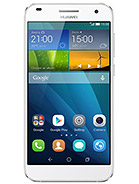
Huawei Ascend G7 |
Pros |
Cons |
|
|
|
|
| Review |
A bit pricier and no metal, but the Asus Zenfone 2 ZE551ML has 1080p resolution on its 5.5" screen and it's a dual-SIM phone. Also, it's the first phone with 4GB RAM, which is paired to a fast quad-core Intel processor. And it's running Android 5.0 Lollipop too.
The Zenfone 2 body is plastic with a design inspired by LG's back buttons. The 13MP/1080p camera and 5MP selfie camera put it on equal footing with the Ascend G7.
Keep in mind that Asus naming scheme is very confusing and there are both a 2.3GHz CPU/4GB RAM phone and a 1.8GHz/2GB phone that bear the name "Zenfone 2 ZE551ML". We'd say go for the 2.3GHz/4GB option, it's not that much more expensive.
Asus is slowly expanding availability, but the Zenfone 2 family is still scarce in some regions.
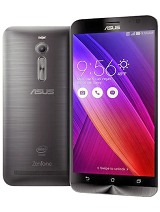
Asus Zenfone 2 ZE551ML |
Pros |
Cons |
|
|
|
|
| Review |
Coming by the end of the month is another contender, the Alcatel Idol 3 (the 5.5" model). For some extra scratch it tops the Ascend G7 with a 1080p screen and an octa-core processor (also Cortex-A53). It will launch with Android 5.0 Lollipop and offers 4G LTE, dual-SIM connectivity is an option.
The Idol 3 is an unusual phone - it has stereo speakers on the front (by JBL) and either one can be the earpiece, the phone is reversible. Also, it fuels your selfie obsession with an 8MP/1080p camera on the front. On the other side is a 13MP/1080p camera.

Alcatel Idol 3 (5.5) |
Pros |
Cons |
|
|
|
|
| Review |
Yet another 5.5" entry is the Oppo Find 7a. It has a 1080p screen and a Snapdragon 801 chipset with 2GB of RAM. It does improve on the Zenfone 2 and Ascend G7 spec sheet with a 2160p video recording from the 13MP camera, plus high frame rate modes like 1080p@60fps and 720p@120fps.
This phone is the hardware base for the OnePlus One. The offshoot company sold phones on an invite-only basis and while that's no longer the case, it has been plagued with some reliability issues. Not to mention the software drama with Cyanogen OS and the delay of the in-house Oxygen OS.
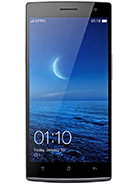
Oppo Find 7a |
Pros |
Cons |
|
|
|
|
| Review |
We fault both the Sonys and the HTCs for their chunky bezels, so here's a phone that rose up against that. The LG G2 packs a bigger 5.2" screen in a smaller body than the Xperia Z1. Like it, the G2 has a Snapdragon 800 chipset and the Lollipop update is already rolling out,
The 13MP/1080p camera boasts optical stabilization. One big drawback is that there's no microSD card slot and the base storage is 16GB, so we've picked the 32GB option. At least it leaves you some room for downloading games and movies.
This price segment also lets you be adventurous - it's enough to get you some pretty unique gadgets, without risking early-adopter kind of cash.
How about a watch phone? The Samsung Gear S is the original Tizen phone, though you can't tell by the form factor. It's a chunky watch, but it has a 2" 300ppi screen, which is better than what other smartwatches have. You can use S-Voice commands though. It has 3G connectivity so you can use web services without any smartphone on you or even a Wi-Fi network nearby.
The 2" screen is not as easy to use as a modern smartphone, but the Gear S is better to take on a run. The heart rate monitor will provide additional data to speed/distance from the GPS. With an IP67 rating you can't take it swimming, but don't worry about being caught in the rain. The watch also has navigation courtesy of Here Maps so you'll never get lost.
Sure, the LG Watch Urbane LTE has 4G connectivity and a mobile payment system, but that's available only in South Korea and is close to €600.
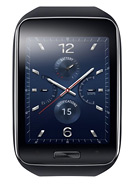
Samsung Gear S |
Pros |
Cons |
|
|
|
|
| Review |
Reader comments
- Moony Zaher
- 05 Jun 2015
- N3A
I bought samsung s5 last year,it is amazing device and i think the android os is better than os i used before : ios ,blackberry ,windows .. Early in 2015 .. other brands released better phones than my s5 , so as an advise :please choose a satisfyin...
- kavi
- 02 Jun 2015
- IWU
Oneplus one s missing..
- phoney
- 02 Jun 2015
- YaH
Only a few phones support tmobile LTE band 12. Now is not a good time to buy a new GSM phone if you use tmobile.
